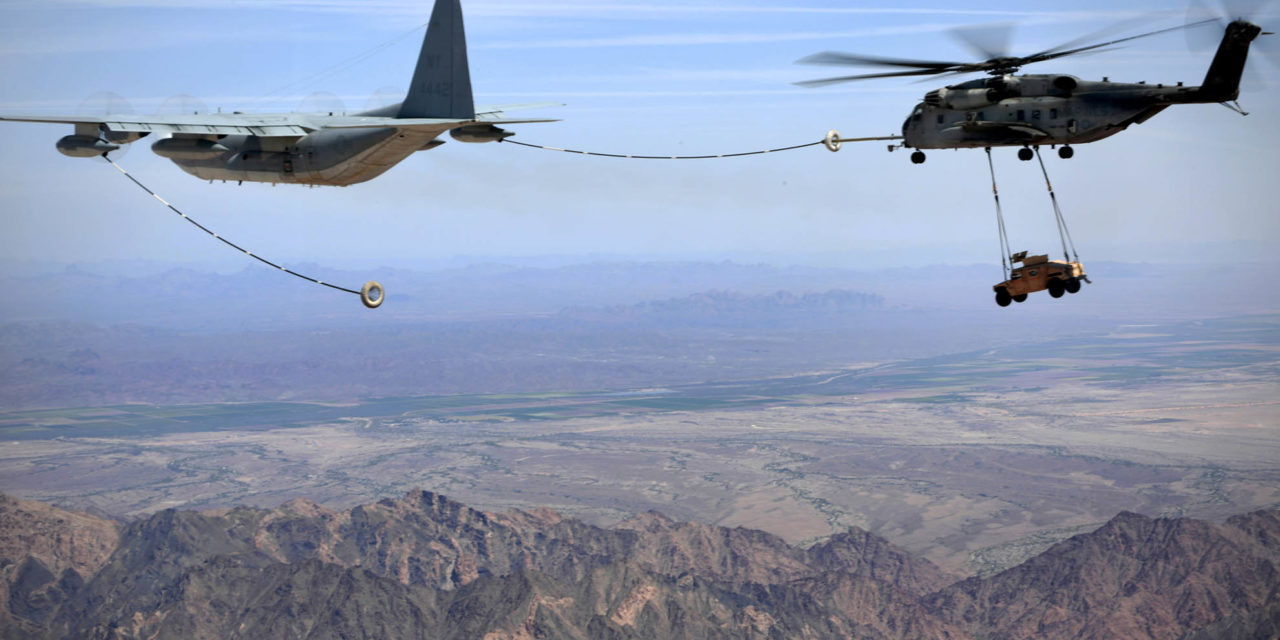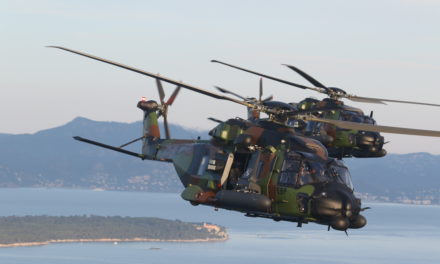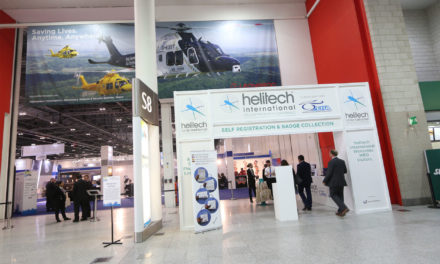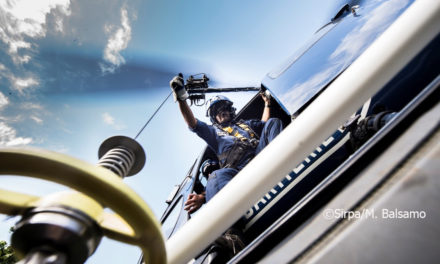The quarrel between the old and the modern is an eternal subject born at the French Academy, and agitated the literary and artistic world at the end of the 17th century. Today, the quarrel has found its way into the world of military helicopters.
The question is simple in its statement: should we remain faithful to what has already been done, and simply perfect it; or just forget the old world and welcome innovation? As far as the helicopter world is concerned, a truly strange dichotomy can be observed in western industrial countries. On the one hand, families of aircraft, which are undoubtedly very successful, and constantly being modernized, in order to give birth to newer versions: Super Puma, Chinook, CH-53, Blackhawk to name a few… All have completed their first initial flights between 1961 and 1978, which ranks them without question, as old. Constantly improved since their initial flights, these aircrafts still remain references in their category. And then on the modern side, boosted by US Army requirements, a new family of very innovative aircraft emerge, promising major technological breakthroughs. One might have thought that the border between these two worlds was relatively watertight: the old heavy maneuver helicopters, those whose replacement would require significant investments; and the modern reconnaissance and attack helicopters, which are cheaper and built in large numbers. But as we will see, areas of friction exist at the border of the two worlds.
On September 6, 2019, Airbus Helicopters delivered the 1000th aircraft of the Super Puma family (see Helicopter Industry 99). We learned on this occasion that the aircraft would undoubtedly continue its commercial life beyond 2030. The X6 project, which was created to offer it a successor by 2025, has therefore been buried! No strong business cases could be found for this project. The best successor to the Super Puma, which flew for the first time in 1978, remains to this date the…Super Puma, and its continuous improvements to make it more efficient, reliable and safe. If the Oil & Gas sector remain deeply depressed, the public sector and military markets continue to bear the future of the Super Puma, which has won several major contracts in recent months (Japan, Kuwait, Hungary, Brazil, Uzbekistan…).
In the USA, the CH-47 Chinook and CH-53 Stallion offer two emblematic examples of aircraft designed over 50 years ago, which continue to secure the future of their respective manufacturers. In their most modern versions, the two aircraft continue to compete on the world markets. The current competition in Germany is ready to set the benchmark for the competition: replacing its 68 CH-53G Stallion, Germany plans to buy 45 to 60 heavy helicopters for an amount estimated at more than 4 billion euros. Thus, the competition will be played between Sikorsky (a Lockheed-Martin subsidiary), which offers the CH-53K King Stallion, and Boeing’s CH-47F Chinook.
The CH53K is the latest version of an aircraft that flew for the first time in 1964. The current main operator, the US Marines Corps, plans to use its CH-53 E at least until 2030. But their replacement with the “K” model has already begun. The CH-53K features impressive characteristics: a little over 30m in length and 44 tons in takeoff weight, it is the largest helicopter in service in the United States. The price, $156 million per unit, is also impressive, in addition to the strength of the mechanical systems; its main gearbox together with the rotor mast weigh more than five tons, thus, more than the weight of an empty Super Puma!
The US Marines received their first King Stallion in May 2018, after twelve years of development. They expect 199 more. The King Stallion competes with the CH-47F Chinook block II, another child from the Vietnam War. For the time being, the Boeing Philadelphia plant continues to produce CH-47F block I units for the US Army and a few exports for clients. But the future belongs to block II, which flew for the first time on March 29, 2019. The block II version, with new blades and fuel tanks returns the Chinook to its initial carrying capacities, which had eroded over the years, do to the progressive weighing down of the aircraft. Boeing had planned a smooth transition from block I to block II, and expected at least 15 to 20 years of work, to modernize the considerable size of the US Army fleet (473 CH-47F and 69 MH-47G). Boeing even estimates that the completed upgrades, could help in the development of future versions of the Chinook, and prolong its production for several decades to come. However, there is a risk that this could be disrupted; should the modernization of the 69 MH-47G for the Special Forces still be on the agenda, the same could not be said for the 473 aircraft of the conventional forces.
This project is now being called into question in order to redirect budgets towards the Future Vertical Lift program (FVL), which brings us back to the fighting between the old and the new! The FVL program was launched in 2003, in order to create five families of technologically innovative military helicopters, from the lightest reconnaissance aircraft to the heaviest in the CH53K category. At the heart of this program, the Future-Armed Reconnaissance Aircraft (FARA) aims to be put in service by 2028 at the latest, a very fast and armed reconnaissance helicopter intended to replace the Apache AH-64s, currently used for reconnaissance missions. Five contenders are in the ranks: Bell, AVX, Karem Aircraft, Sikorsky and Boeing. All are exploring a large number of more or less innovative technical solutions. This is another step towards the global replacement of all existing aircraft whose aerodynamic formulas reach back to the origins of the helicopter itself.
With the JMR (Joint Multi Role Helicopter) demonstrator project, it’s time to begin working on a future replacement for the Blackhawk, which entered into service in 1979. An initial selection was first released by Bell with the V280 project, coupled with the Sikorsky-Boeing SB1 Defiant project. We have now moved from the JMR demonstrator to the Future Long Range Assault Aircraft (FLRAA), a priority program of the US Army, which hopes to start operating the new helicopter in 2030, according to a calendar very close to that of FARA. It should be noted that the US Marines Corps also decline having a need for its own AURA program (Attack / Utility Replacement Aircraft), which was intended to provide a replacement for the Bell AH-1Z Viper and the UH-1Y Venom.
In truth, after years of hesitation, today there is a feeling of urgency at the Pentagon. The US Army has been severely criticized over the past decades for failing to renew its fleet. Operations in Afghanistan and Iraq have shown the capabilities of aircraft born in the 1960s or 1970s, but also their limitations.
Intense speeches on possible clashes with China, an otherwise formidable adversary, have precipitated the study of a new generation of aircraft. This has resulted in an increased level of importance in the development of the FVL. To achieve this, the US Army has decided to cut some other programs. This gives us a glimpse of who will eventually win the competition, the old or the new…
















